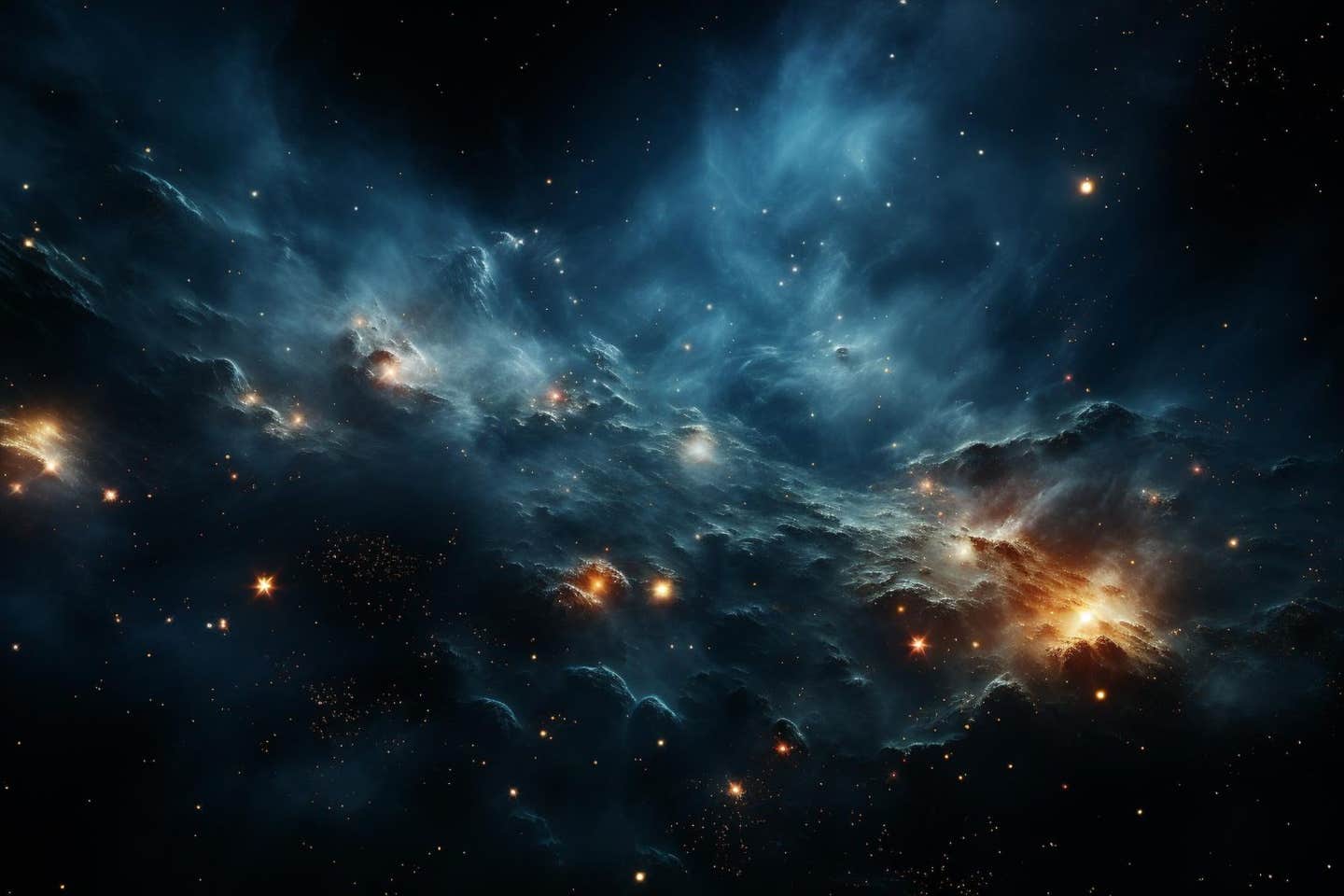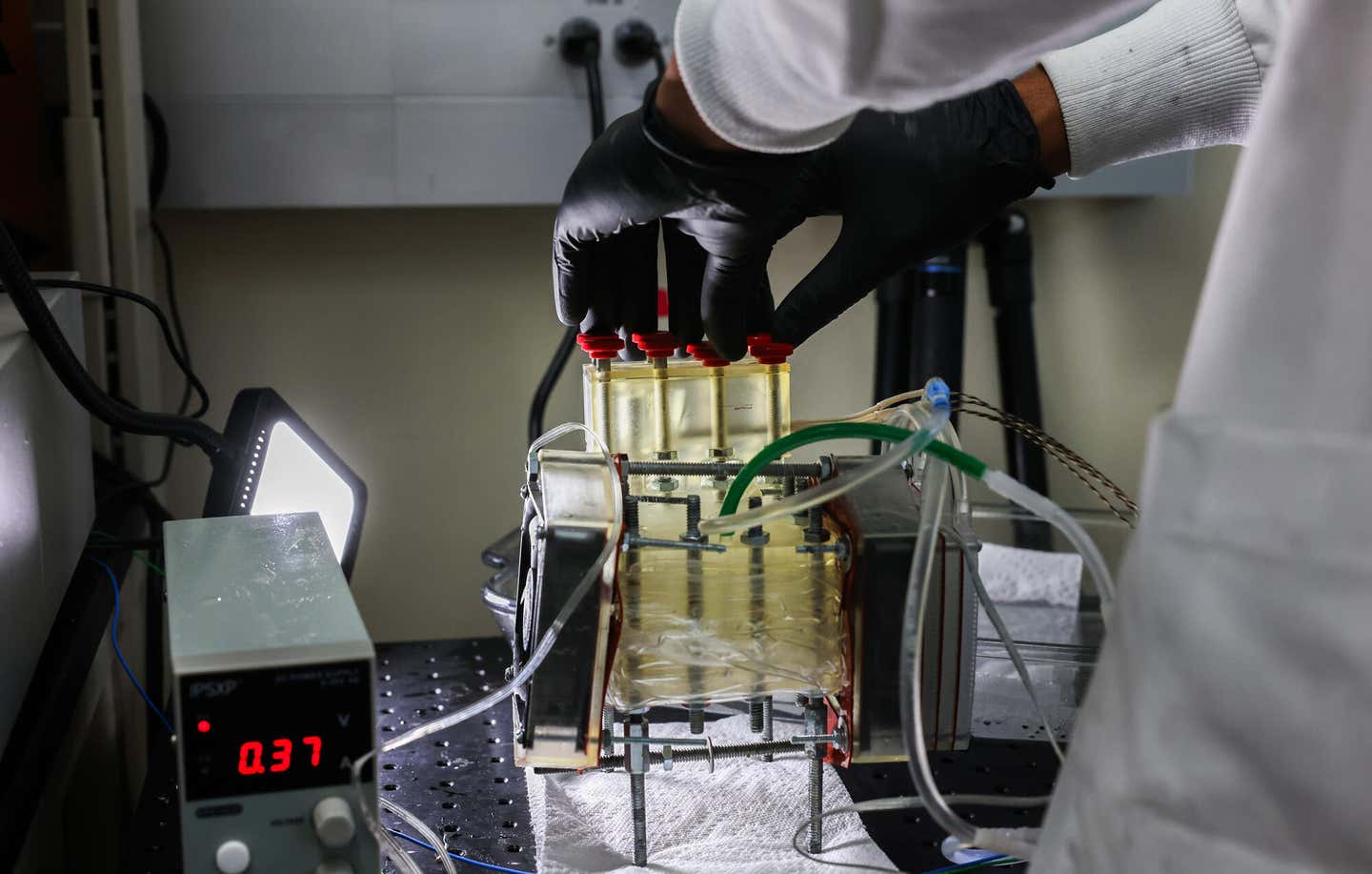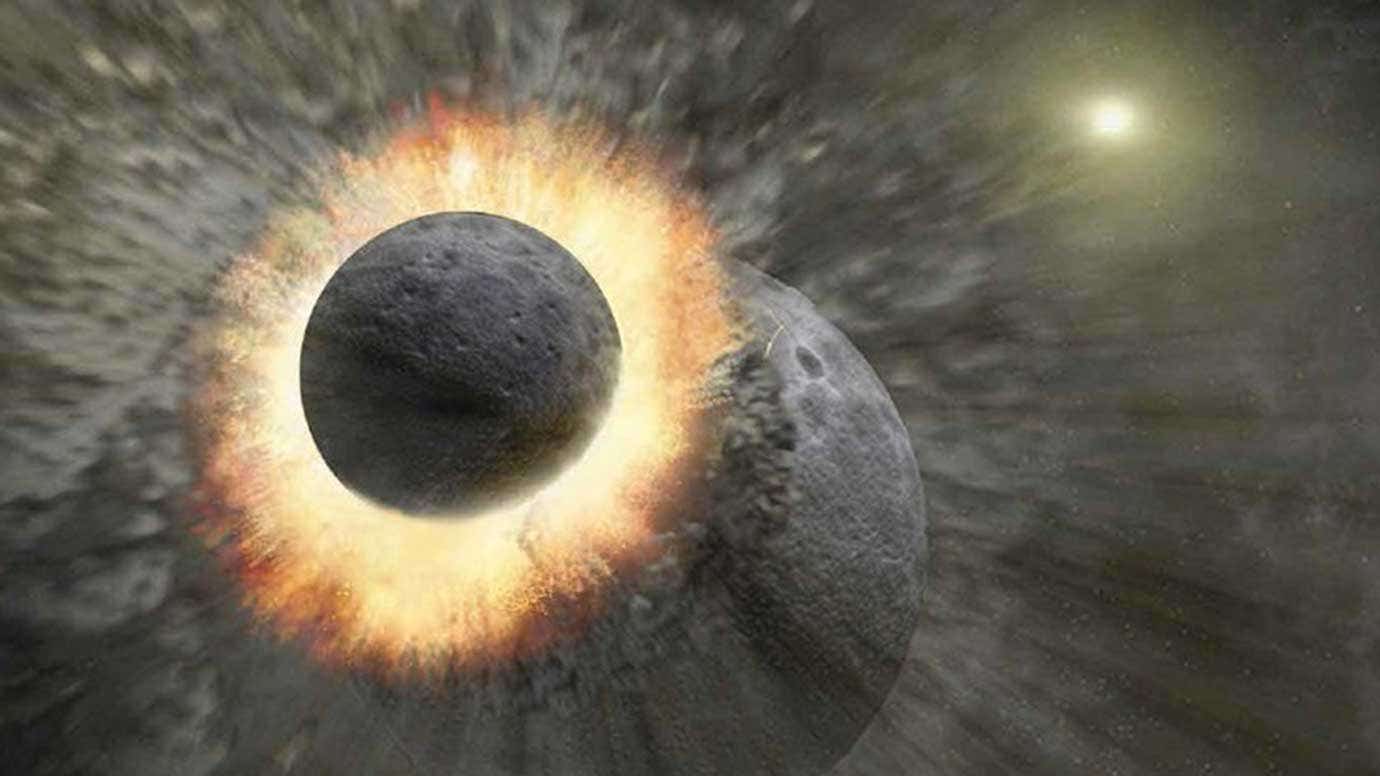Astronomers discover origins of dark matter in “Dark Big Bang”
The Dark Big Bang theory redefines dark matter’s origins, offering potential evidence through gravitational waves and reshaping cosmic history

Dark Big Bang theory, a fresh perspective on dark matter’s origins, and its potential detection via gravitational waves. (CREDIT: CC BY-SA 4.0)
For nearly a century, dark matter has stood as one of the most perplexing mysteries in modern physics. Despite its invisibility, its existence is undeniable, as it exerts gravitational effects that are essential for explaining the structure and behavior of galaxies.
First hinted at in the 1930s through studies of galaxy clusters, dark matter's gravitational pull was the only way to reconcile observed galactic motions with their visible mass. Later, observations of the cosmic microwave background (CMB)—the faint afterglow of the Big Bang—cemented its place in cosmological models.
According to the 2018 Planck Collaboration, dark matter constitutes 27% of the universe’s total energy, dwarfing the mere 5% occupied by ordinary matter.
Since its discovery, scientists have been on a relentless quest to unveil the nature of dark matter. One of the most promising frameworks is supersymmetry (SUSY), which extends the Standard Model of particle physics by introducing a partner particle for every known particle.
Within this framework, weakly interacting massive particles (WIMPs) emerged as prime candidates for dark matter. WIMPs, if they exist, would interact weakly with ordinary matter and could be produced in particle accelerators like the Large Hadron Collider (LHC) or detected directly through underground experiments.
However, the search for WIMPs has so far come up empty. Experiments like DAMA, which reported an annual modulation signal potentially linked to dark matter, remain contentious. Efforts to reproduce such signals through projects like COSINE-100 have yet to yield conclusive results.
Similarly, the LHC has failed to detect any SUSY particles, casting doubt on the simplest WIMP models. As a result, scientists have begun to explore more exotic possibilities for dark matter's origin and behavior.
One such groundbreaking idea is the "Dark Big Bang" (DBB) theory, proposed in 2023 by Katherine Freese and Martin Winkler from the University of Texas at Austin. Unlike the conventional Big Bang, which explains the birth of ordinary matter, the DBB suggests that dark matter arose from a separate event.
Related Stories
This second Big Bang, occurring sometime after the first, would have generated dark matter through the decay of a quantum field trapped in a false vacuum state.
In this model, the early universe consisted of two sectors: the visible sector, filled with the familiar particles and forces, and a dark sector, which remained cold and decoupled. Eventually, the dark sector underwent its own phase transition, analogous to the visible sector’s hot Big Bang.
This transition produced a thermal bath of dark particles, governed by a unique set of physical laws. The DBB model is particularly versatile, as it can accommodate a wide range of dark matter particle masses, from as light as a few keV to as heavy as 101210^{12}1012 GeV.
What sets the DBB model apart is its potential to leave observable traces. The phase transition in the dark sector could generate gravitational waves (GWs), ripples in the fabric of spacetime. These GWs would be distinct from those produced by black hole mergers or neutron star collisions and could be detected by next-generation observatories.
In particular, low-frequency GWs detectable by pulsar timing arrays (PTAs) such as the International Pulsar Timing Array (IPTA) and the Square Kilometer Array (SKA) could provide crucial evidence for the DBB.
Recent work by Cosmin Ilie, an Assistant Professor of Physics and Astronomy at Colgate University, and Richard Casey, a senior physics student, has further refined the DBB theory. Their study explores new parameter spaces for the dark sector's tunneling field, identifying scenarios that align with existing cosmological observations.
These scenarios predict not only the correct abundance of dark matter but also GW signals that could soon be within reach of PTA experiments.
“Detecting gravitational waves generated by the Dark Big Bang could provide crucial evidence for this new theory of dark matter,” says Ilie. Such detection would be groundbreaking, offering the first direct evidence of dark matter's distinct origin.
The 2023 detection of background GWs by the NANOGrav collaboration, a part of IPTA, adds an intriguing dimension to this research. While the exact source of these waves remains uncertain, they could potentially align with the DBB model’s predictions.
Beyond its implications for dark matter, the DBB theory offers a fresh perspective on the early universe. Traditionally, cosmology has operated under the assumption that all matter, dark or otherwise, emerged from the same event.
The idea of a dual-origin universe challenges this notion, suggesting a more complex interplay of forces and fields in the universe's infancy. If confirmed, the DBB model could reshape our understanding of cosmic evolution, from the formation of the first galaxies to the large-scale structure of the universe.
The search for dark matter is a central pillar of modern physics, driving advancements in technology and theory. Direct detection experiments, such as those conducted deep underground, continue to push the boundaries of sensitivity, aiming to capture fleeting interactions between dark matter particles and ordinary matter.
Meanwhile, astrophysical observations, from the CMB to galactic rotation curves, provide indirect but compelling evidence for dark matter’s gravitational influence. The DBB model, with its unique predictions and testable consequences, adds a powerful new tool to this arsenal.
As observational capabilities advance, the prospect of detecting GWs from a DBB becomes increasingly plausible. Projects like SKA, expected to come online in the next decade, promise unprecedented sensitivity to low-frequency GWs. These efforts could finally lift the veil on dark matter's mysterious origins, answering questions that have puzzled scientists for generations.
In the broader context, understanding dark matter is not just a scientific pursuit but a quest to comprehend the fundamental nature of the universe. Whether through traditional particle physics or novel cosmological theories like the DBB, each discovery brings us closer to unveiling the full tapestry of existence.
Note: Materials provided above by The Brighter Side of News. Content may be edited for style and length.
Like these kind of feel good stories? Get The Brighter Side of News' newsletter.
Joshua Shavit
Science & Technology Writer | AI and Robotics Reporter
Joshua Shavit is a Los Angeles-based science and technology writer with a passion for exploring the breakthroughs shaping the future. As a contributor to The Brighter Side of News, he focuses on positive and transformative advancements in AI, technology, physics, engineering, robotics and space science. Joshua is currently working towards a Bachelor of Science in Business Administration at the University of California, Berkeley. He combines his academic background with a talent for storytelling, making complex scientific discoveries engaging and accessible. His work highlights the innovators behind the ideas, bringing readers closer to the people driving progress.



